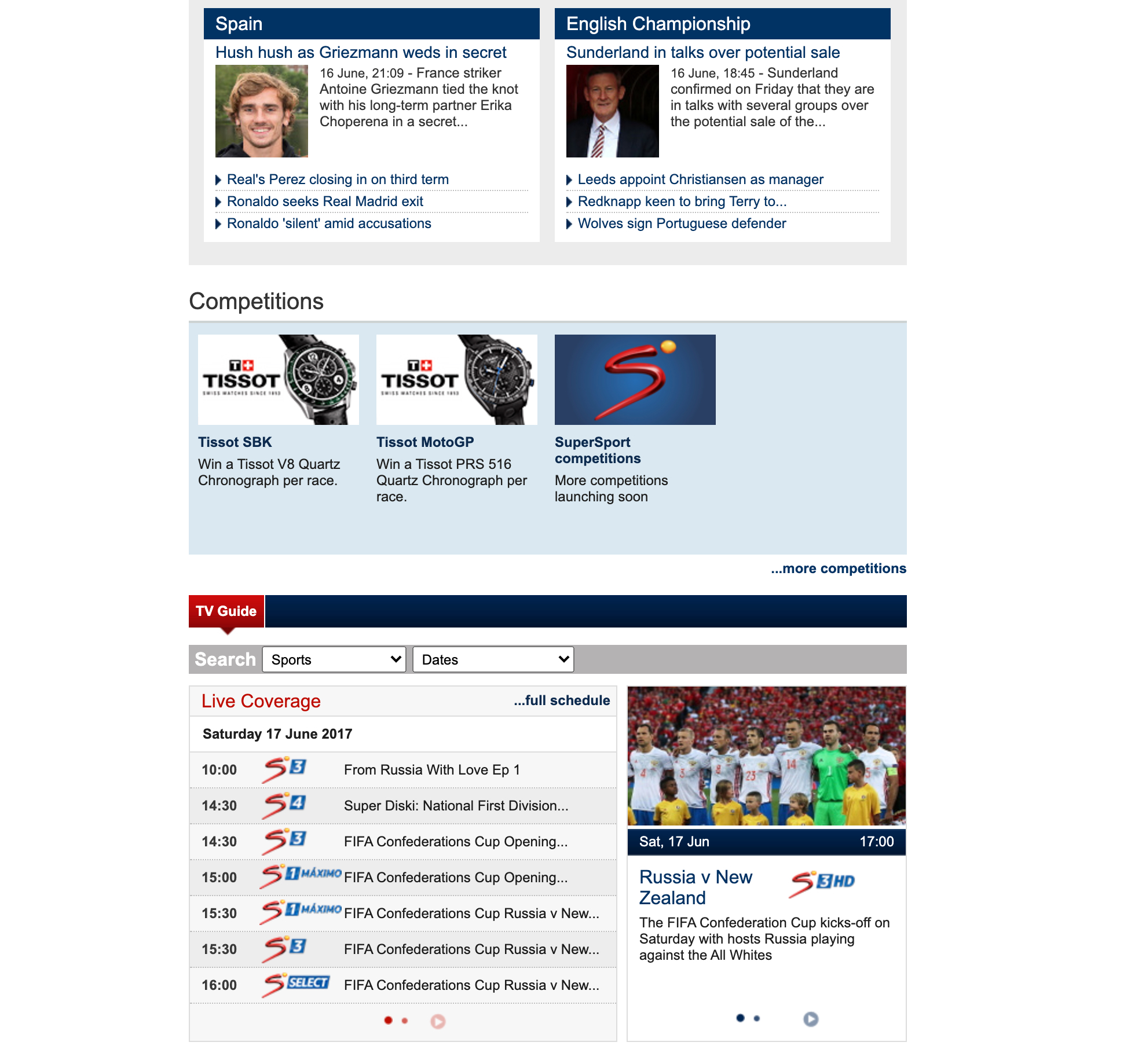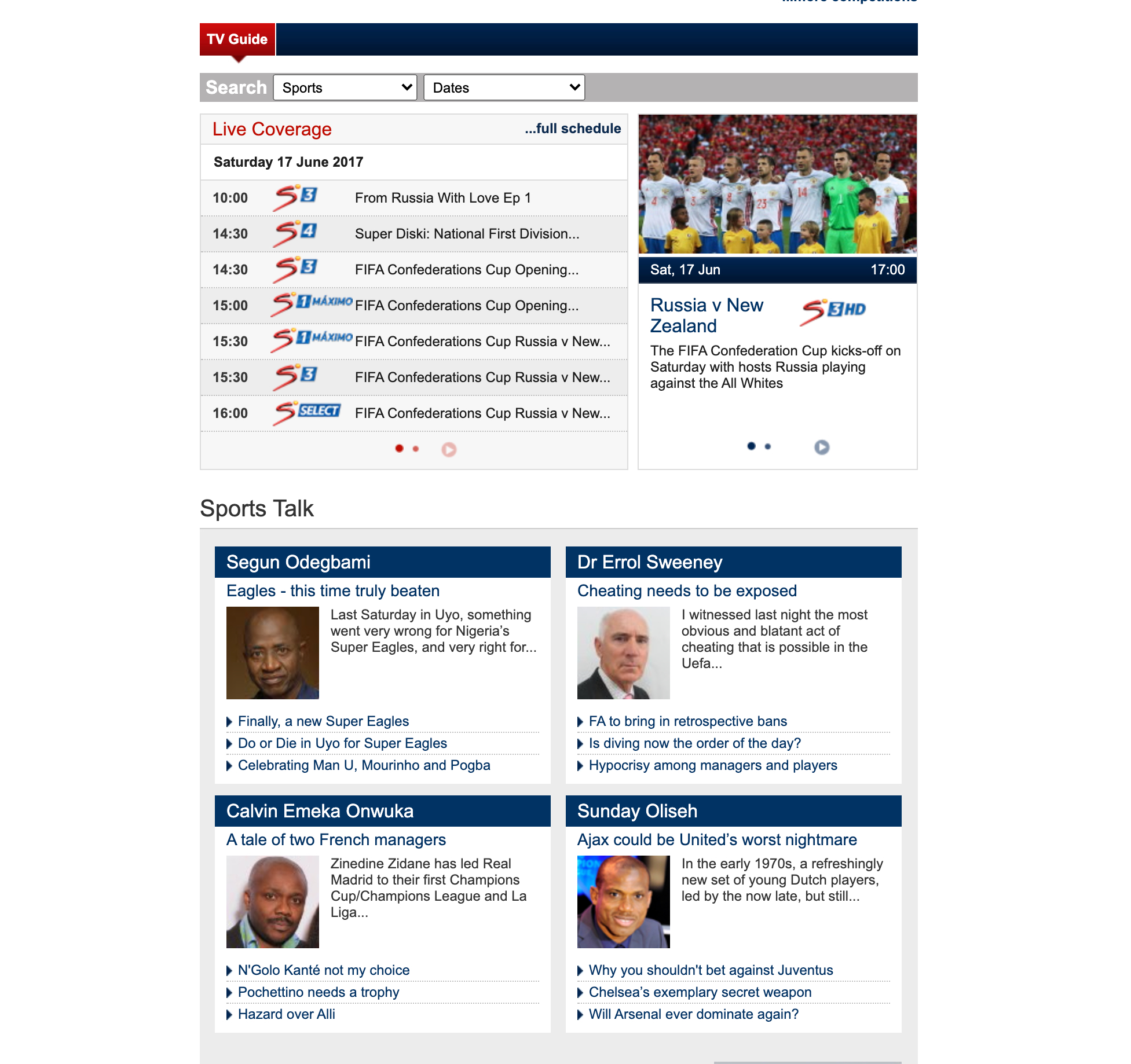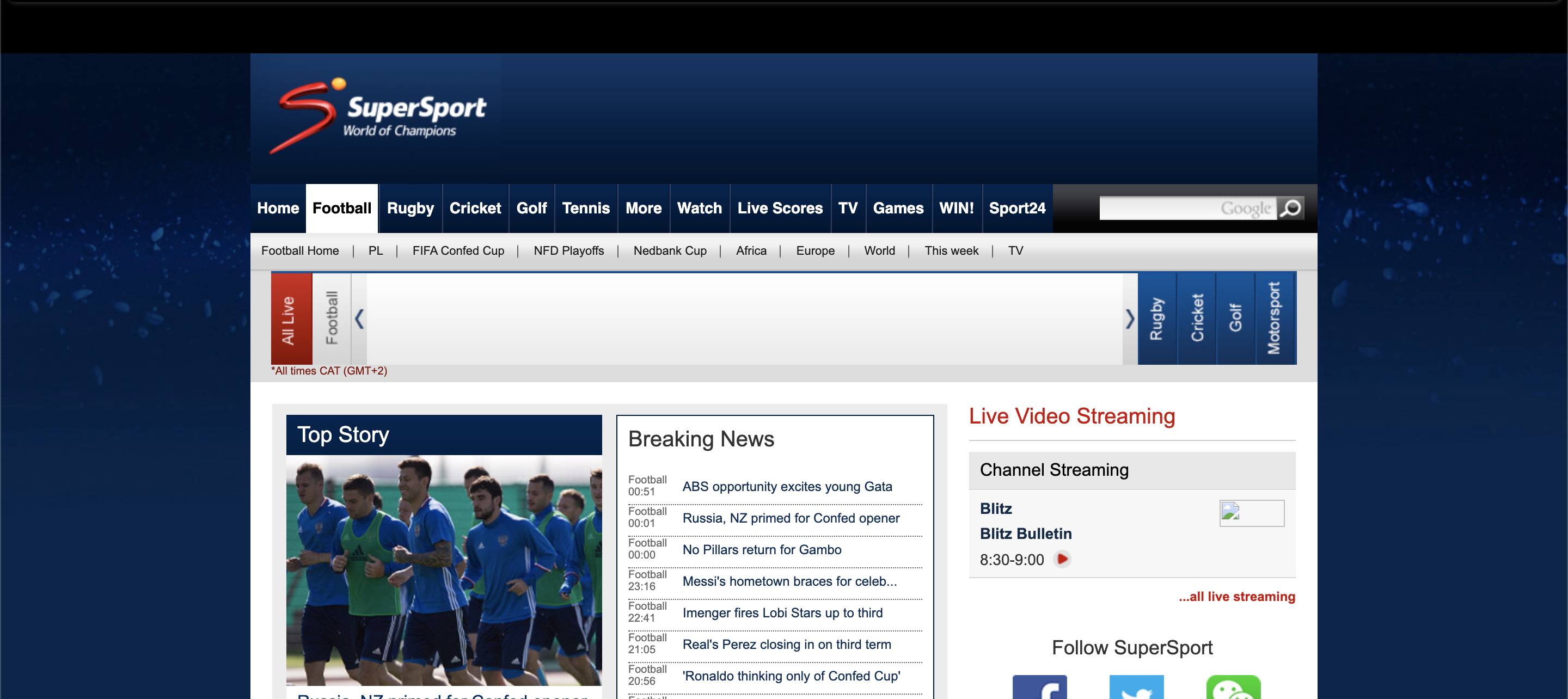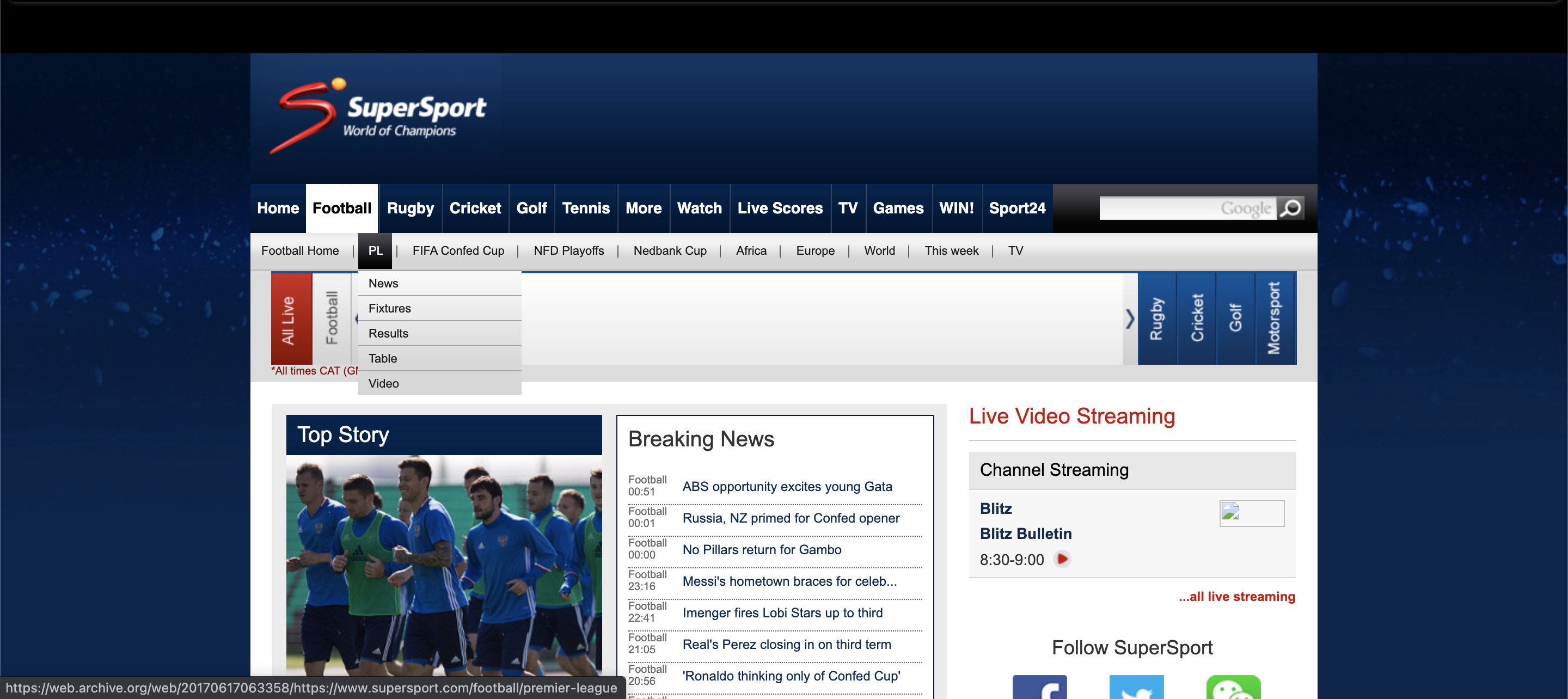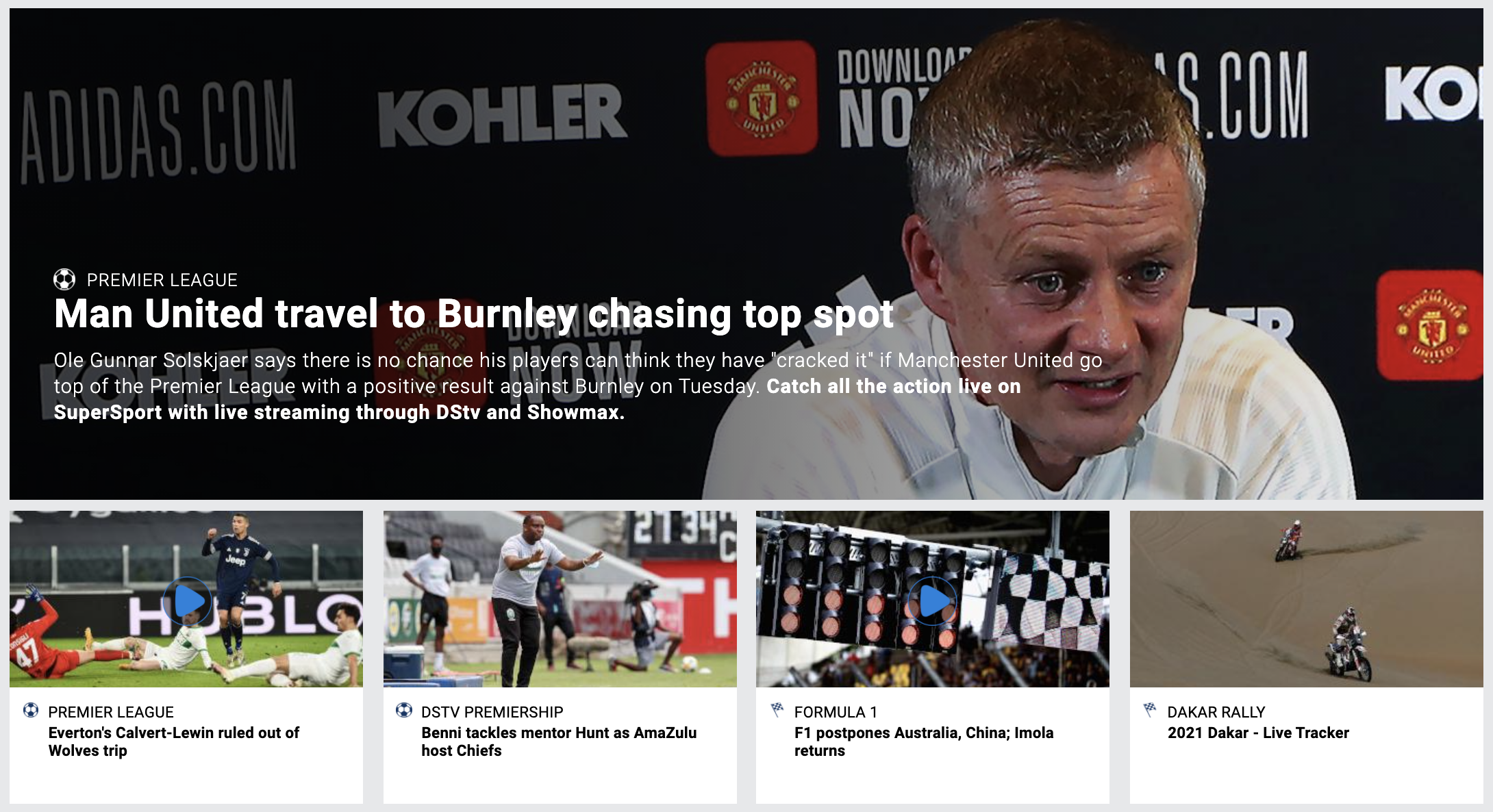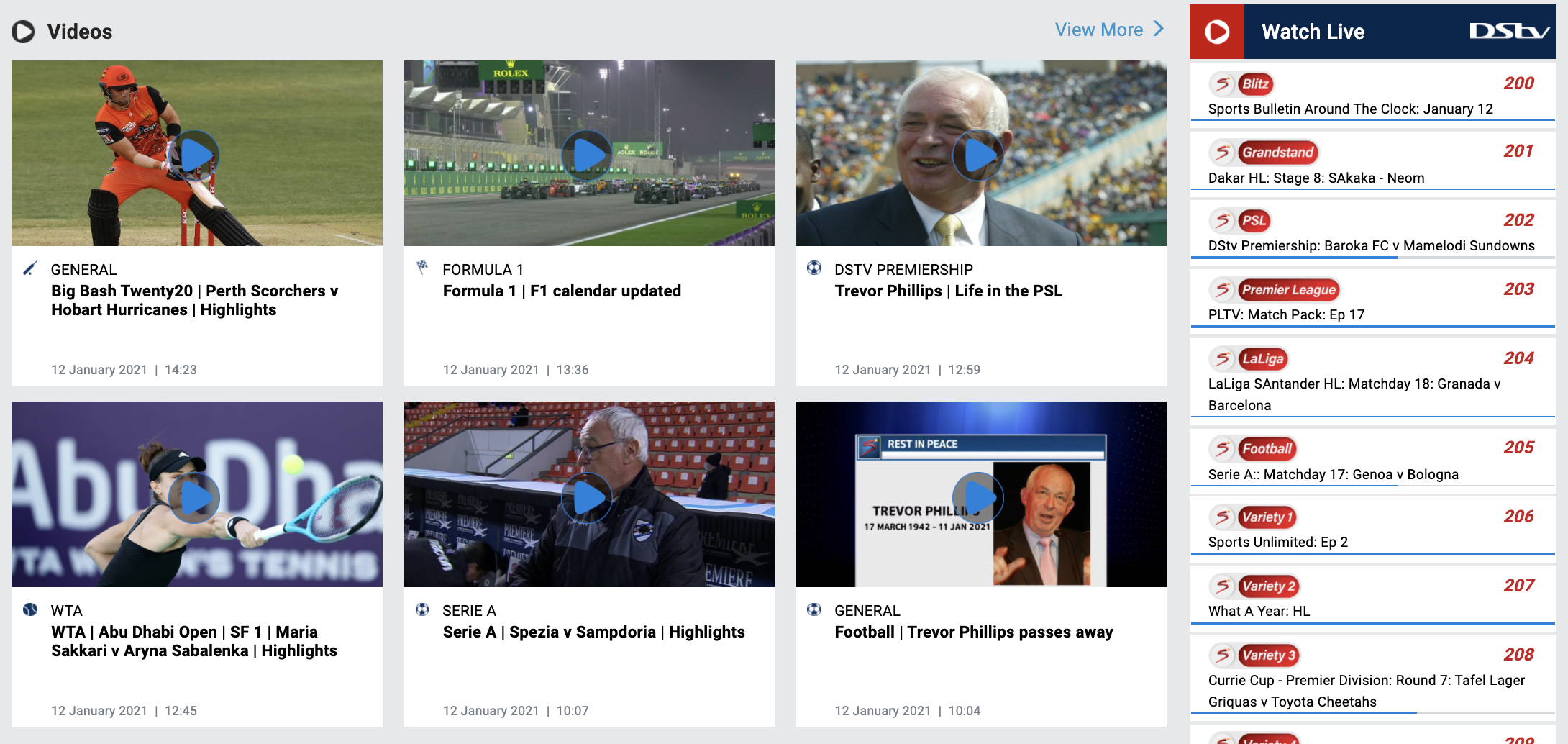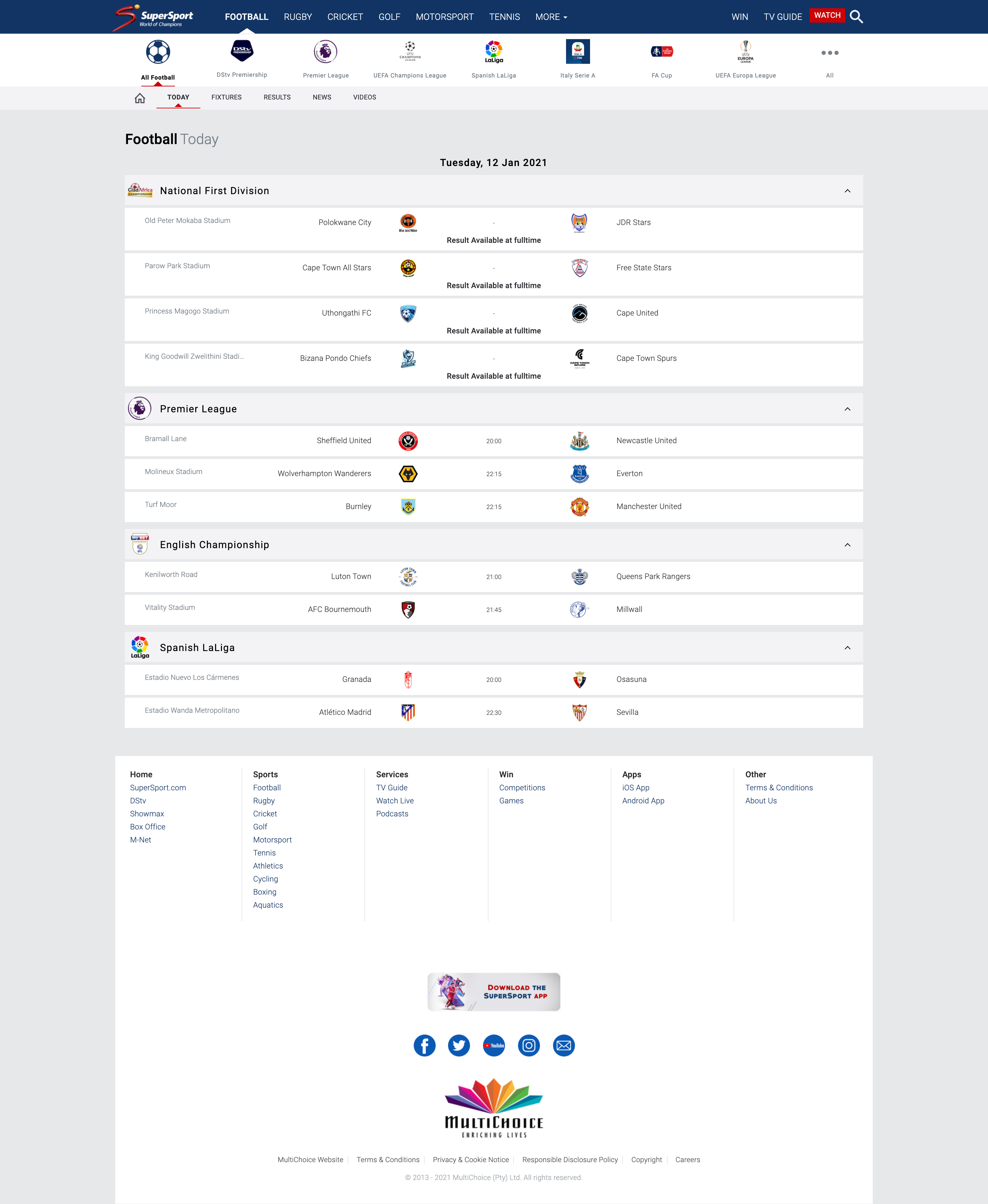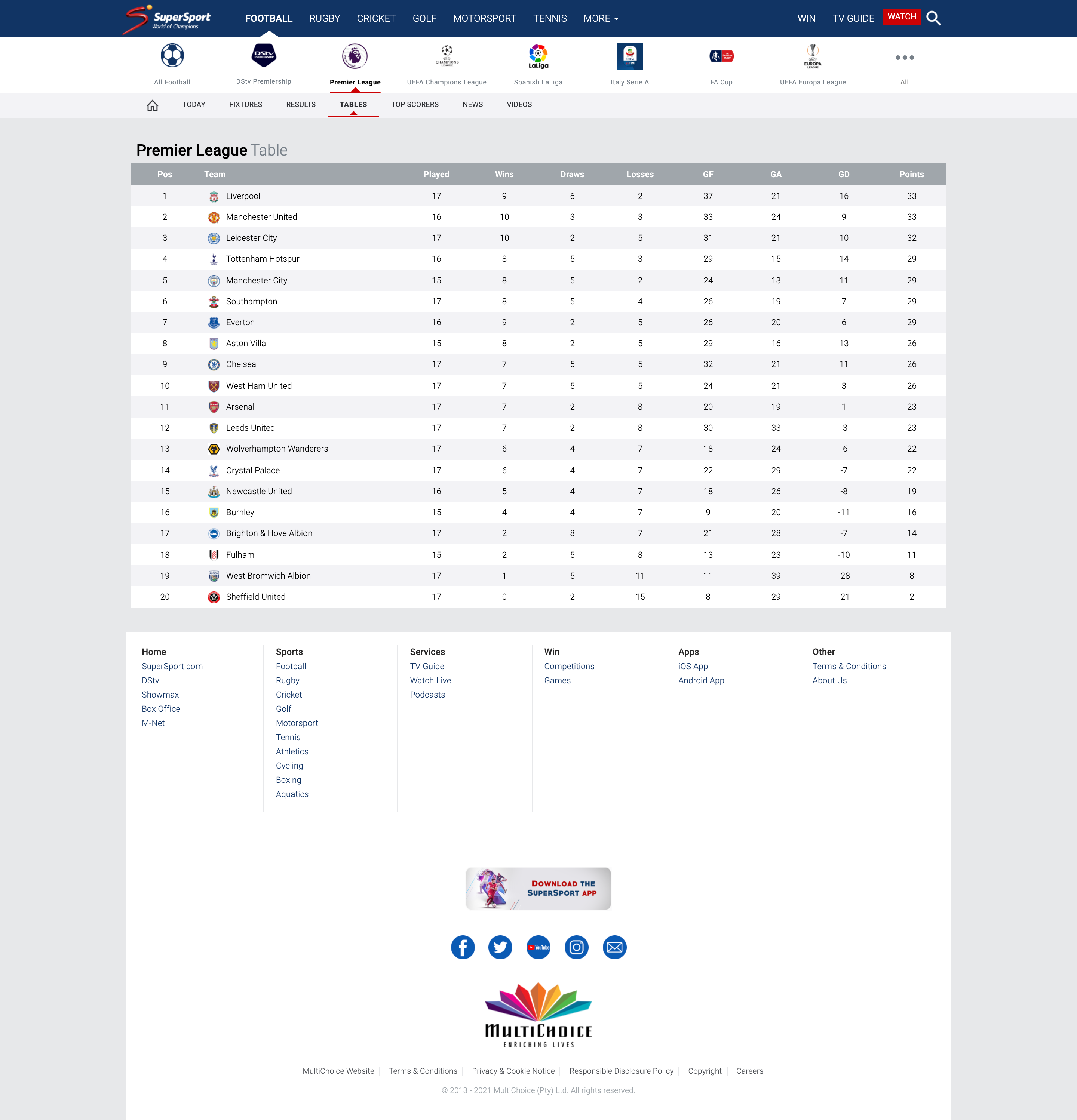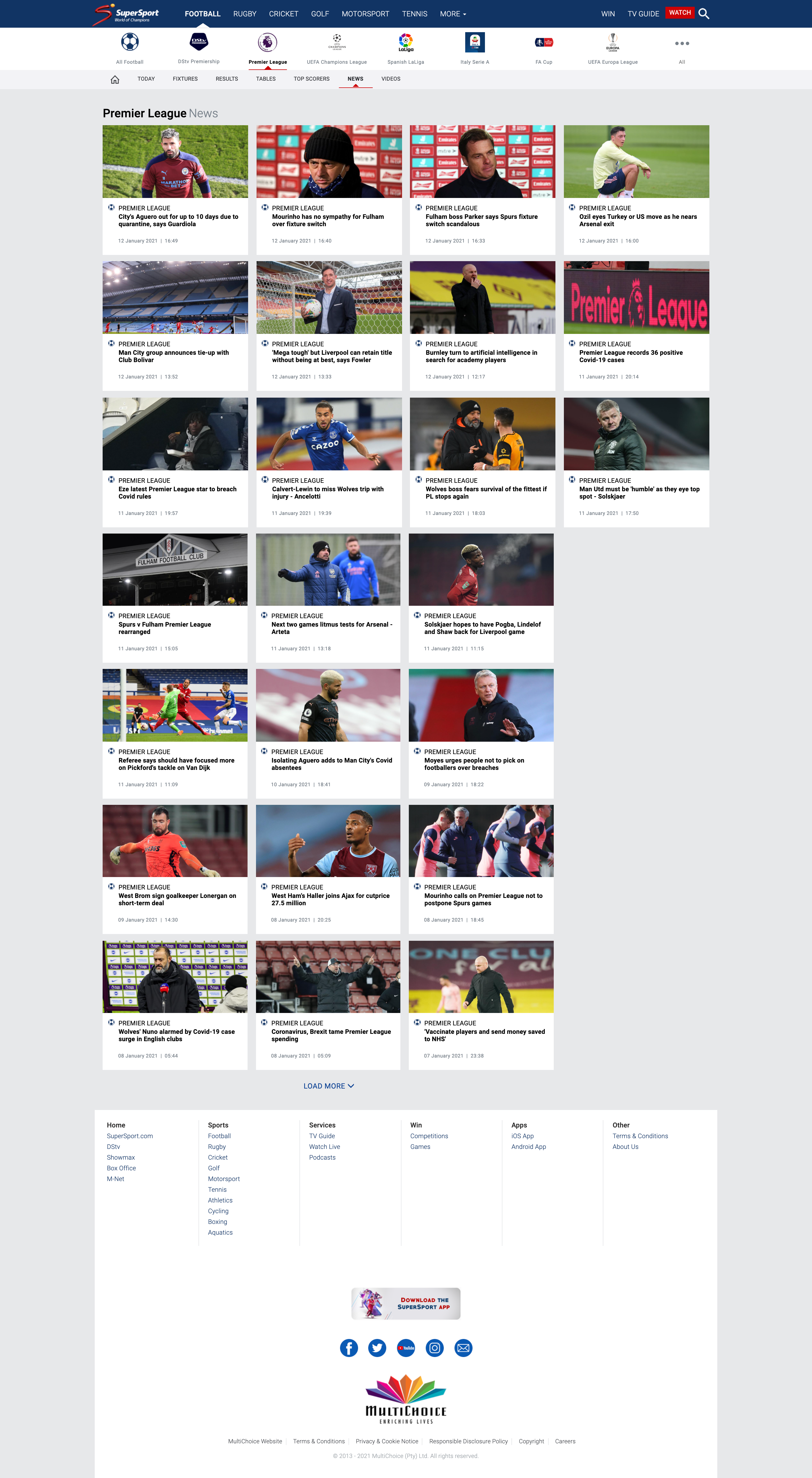About the project
Problem: Through this redesign, we were tasked with improving the navigation structure, accessibility look and feel, as well as overall content discoverability for the broadcaster. The new responsive site would replace the previously seperate web and desktop versions.
The redesign was guided by very limited analytics data around user behaviour on the site, this was mainly due to there being very little set up on the legacy platforms to allow for such - the systems had only last been replatformed ±10 years prior to the redesign.
Approach: Working as a newly assembled design team and myself as newly employed graduate, I relied very heavily on any-and-all context the existing stakeholders could relay over to me. I also conducted a lot of my own desktop research on competitor sites to get a better sense of where we needed to get with what we had at the time to achieve it.
This project that had been worked by the previous design team and they had a few iterations that we could pick up a lot of great patterns and ideas from - although some of the concepts were not technically feasible at the time, this still set us on the front foot.
My role: I was heavily involved solely within a UX capacity throughout the duration of this project, delivering:
- Competitor Analysis
- low-mid fidelity wireframes / prototypes
- collaborating with ui design and development teams during as we were building
- Testing and enhancements have been carried out continuously since the initial delivery in 2018.
Redesign the SuperSport site by improving the navigation structure, accessibility look and feel, as well as overall content discoverability. The new site needs be responsive to replace the previously seperate web and desktop versions.
Understanding The Problem: Goals and Objectives
I quite an open dialogue with the ux designer who had previously been involved with the web redesign as well as the respective product managers within the SuperSport portfolio. The aim being to unpack:
- Allow users to efficiently discover sports content
- Improve the site navigation; organising published content and sports data according to relevant sports models
- Maximise revenue generation opportunities; display ads, pre & post video ads, full page takeovers sponsorships, etc.
- Be accessible on devices of varying screen sizes
- To have the most relevant sports content available as it unfolds
- To be simple for users (external and internal - editorial team) to navigate across the myriad of available sports
- Bringing features that were previously hidden away closer to the fore
- Anyone and everyone with a sporting interest; from the fanatics, casual sports viewer, to the non-sporty individual trying to join the conversation at the braai
- The actual user base comprised mostly of male sports fans aged 22 and older
- Anywhere i.e. comfort of their home, at the office, etc
Exploration & Solutioning
I had quite an open dialogue with the ux designer who had previously been involved with the web redesign as well as the respective product managers within the SuperSport portfolio. The aim being to unpack:
- To be accessible on devices of varying screen sizes
- To have the most relevant sports content available as it unfolds
- To be simple for users (external and internal - editorial team) to navigate across the myriad of available sports
- Bringing features that were previously hidden away, closer to the fore
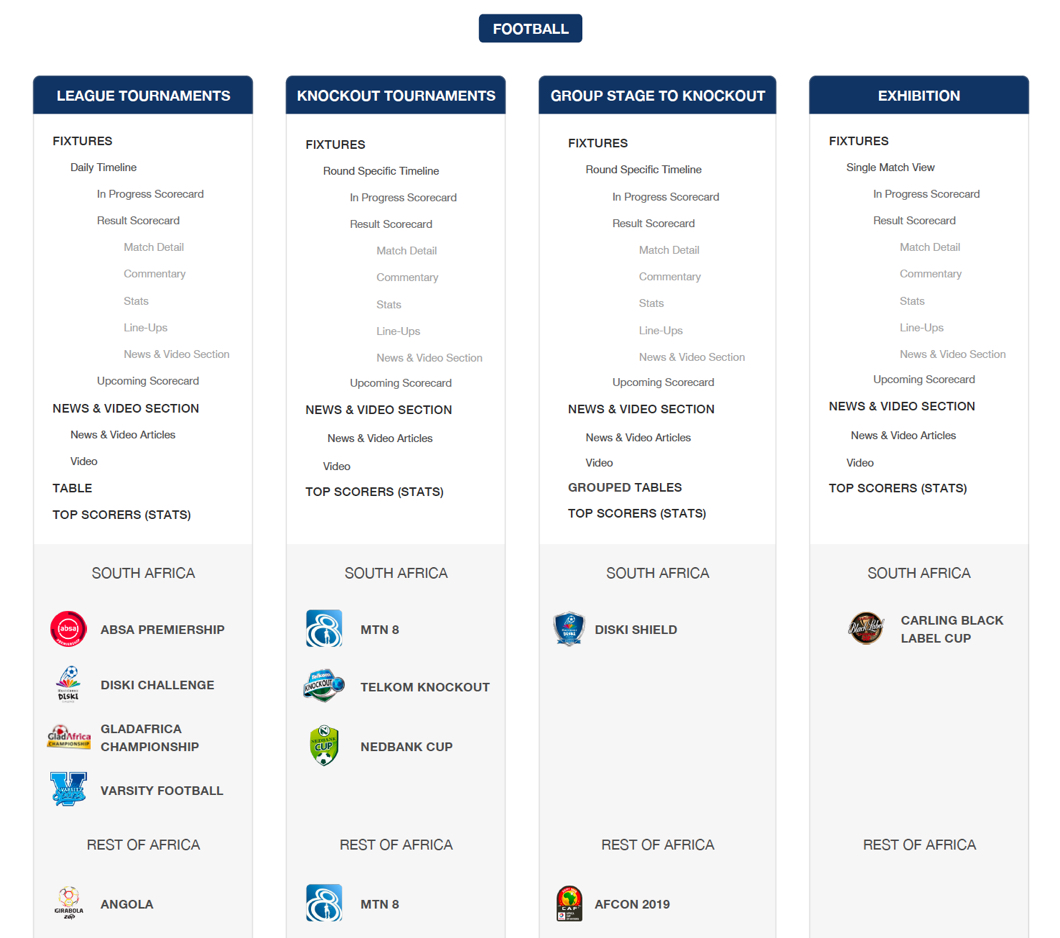
Context exploration: When we had a general idea of the purpose of the website, we needed a system for presenting different types of content across different levels and sections.
In a sports context, a lot of content would have to be displayed at a general sport level and then also filtered down and attributed to tournaments and teams within the respective sporting codes. Understanding this was key to how the navigation was conceptualised.
The old site's navigation was laid out in two tiers: with the primary sports and global features sitting at the top and the subcategories of content and classifications underneath.
For the most part this made a lot of sense when subcategories related directly with the parent sport or feature above, but there were scenarios where global features found a place in the second tier of the navigation - this created a lot of confusion as to how the structure actually worked and how to use it.


The new navigation borrows a lot of what worked well in the old and keeps very much in line with our user's mental models (validated in our testing).
Because personalisation was not on the cards at this stage but we knew that the world of sports is seasonal; certain tournaments and events become popular at different times, the decision to include tournaments on the second tier that editorial team could manipulate in ordering and what featured was unique and inspired.
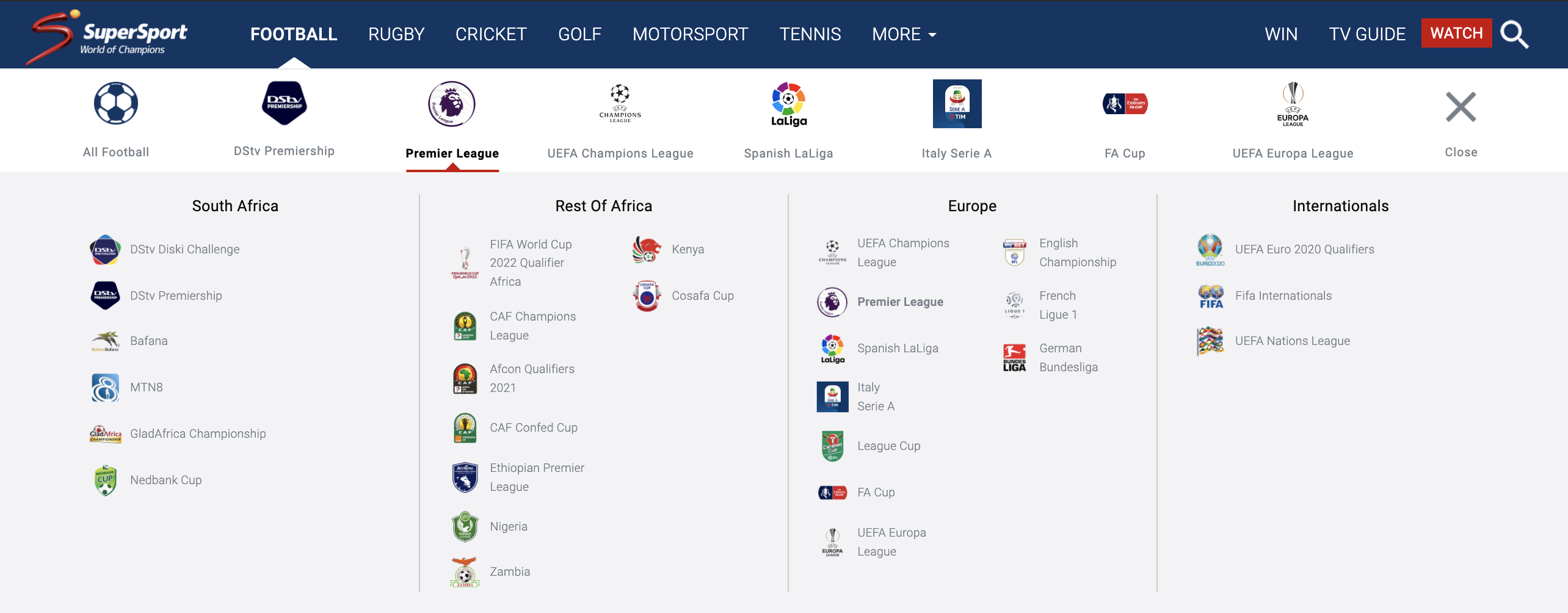
Conceptualising it in this way negates the need for users to search through the broader list of tournaments if what they are looking for is already featured. Although there is still the odd occasion where users are looking for certain tournaments that are off-season, a reduced number of clicks is a universally appreciated consideration.
Conceptualising it in this way negates the need for users to search through the broader list of tournaments if what they are looking for is already featured. Although there is still the odd occasion where users are looking for certain tournaments that are off-season, a reduced number of clicks is a universally appreciated consideration.
Conceptualising it in this way negates the need for users to search through the broader list of tournaments if what they are looking for is already featured. Although there is still the odd occasion where users are looking for certain tournaments that are off-season, a reduced number of clicks is a universally appreciated consideration.
Key Learnings
My role: I was heavily involved solely within a UX capacity throughout the duration of this project, delivering:
- Competitor Analysis
- low-mid fidelity wireframes / prototypes
- collaborating with ui design and development teams during as we were building
- Testing and enhancements have been carried out continuously since the initial delivery in 2018.

